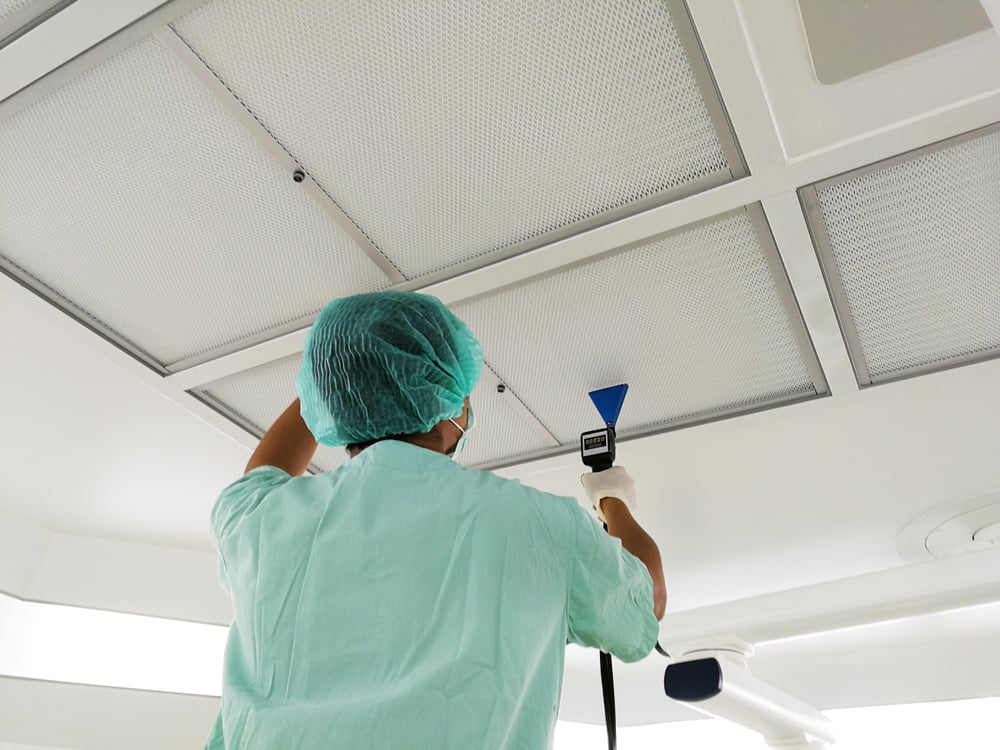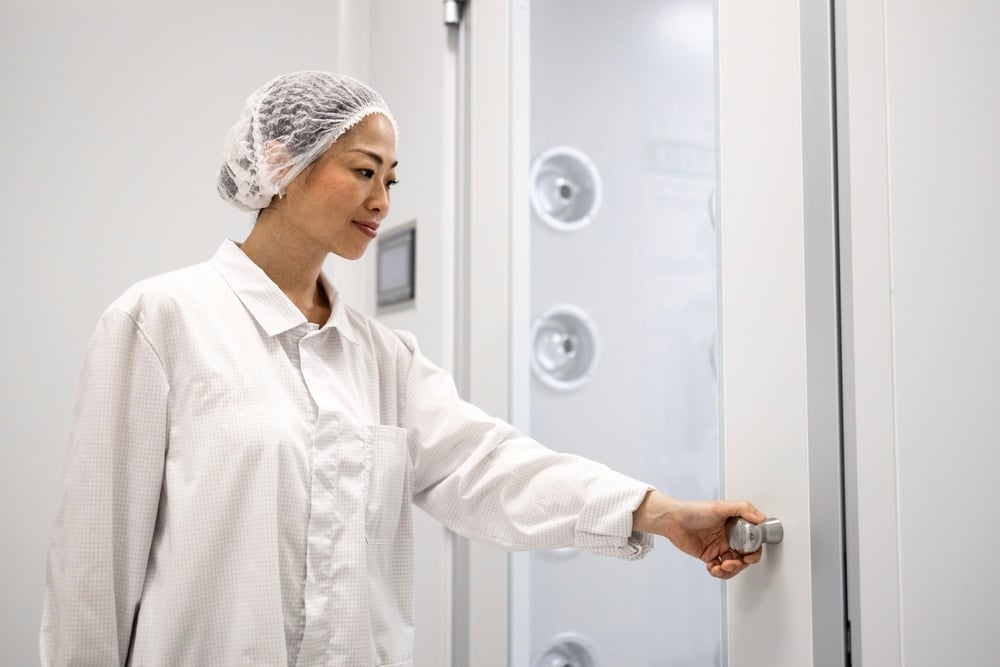Single Pass vs. Recirculating Cleanroom Airflow Designs: What’s Right for Your Environment?

Selecting the appropriate cleanroom airflow design—single pass or recirculating—is a key decision that significantly influences the environment’s performance, efficiency, and compliance. Each of the two options serve fundamentally different purposes. Understanding the nuances of these designs is essential for ensuring your cleanroom meets industry standards and supports your facility’s operational goals.
Understanding the Critical Role of Cleanroom Airflow
Cleanroom airflow is central to contamination control. The primary objective of any cleanroom is to regulate airborne particles to specified ISO classifications, which requires maintaining directional, filtered airflow throughout the space. This airflow carries away particulates introduced by personnel, equipment, and processes, preventing buildup that could compromise sensitive operations.
The distinction between single pass and recirculating cleanroom airflow lies in how the air exits the room. Selecting the appropriate airflow design can mean the difference between an optimized, compliant cleanroom and one that struggles with thermal comfort, particle counts, or rising operational costs.
Comparing Single Pass vs. Recirculating Cleanrooms
While both cleanroom airflow designs aim to reduce particulate contamination, their infrastructure, costs, and performance capabilities vary widely.
What is Single Pass Cleanroom Airflow?
A single pass cleanroom is a relatively simple system in which ambient air from the external environment is drawn into a plenum, directly from the ambient space or even ducted from an air handling unit (AHU). HEPA fan filter units then push this filtered air into the cleanroom. From there, the air flows toward the floor and exits through wall-mounted exhaust grilles into the surrounding building environment.
This airflow design is ideal for cleanrooms that do not require strict control over temperature or humidity. Instead, it relies on the conditions of the surrounding warehouse or facility space to provide general climate moderation.
%20(1).png?width=1616&height=1108&name=image%20(1)%20(1).png)
Pros and Cons of Single Pass Cleanrooms
|
Pros |
Cons |
|
|
Best Use Cases for Single Pass Cleanrooms
- Assembly areas not requiring tight climate control
- Electronics packaging
- Medical device inspection zones
What is Recirculating Cleanroom Airflow?
A recirculating cleanroom operates as a closed-loop system, offering precise control over environmental conditions. Clean, filtered air is pushed from a ceiling plenum by HEPA fan filter units into the cleanroom. The air then moves toward the floor, where it’s collected via low-wall returns and channeled back into the plenum for re-filtration. A recirculating system can also have the supply and return air directly ducted back to the AHU.
In these designs, air may be routed through HVAC systems that provide cooling, heating, humidification, or dehumidification, depending on the cleanroom’s requirements. The majority of the air remains within the system, constantly cycled to maintain stable conditions.
%20(1).png?width=1920&height=1439&name=image%20(2)%20(1).png)
Pros and Cons of Recirculating Cleanrooms
|
Pros |
Cons |
|
|
Best Use Cases for Recirculating Cleanrooms
- Pharmaceutical manufacturing
- Semiconductor fabrication
- Biotechnology labs
- Medical device production
How to Choose the Right Cleanroom Airflow Design
Deciding between single pass and recirculating cleanroom airflow isn’t just a matter of budget—it’s a strategic choice that should align with your industry, process requirements, environmental controls, and facility infrastructure.
Choose a recirculating cleanroom if:
- You need precise control over temperature and humidity.
- Your process generates heat or moisture that must be managed.
- You're dealing with ISO Class 5-7 cleanroom standards or stricter.
- Contamination risk must be minimized with air re-filtration.
- You want to isolate the cleanroom from impacting surrounding spaces.
Choose a single pass cleanroom if:
- Your processes do not require tight environmental controls.
- You are building in a facility where warehouse HVAC is sufficient.
- You are aiming for a lower-cost, simpler design with easier installation.
- You don’t mind conditioned air exiting into surrounding spaces, or your facility might even benefit from it.
Sometimes, it can be helpful to consider how your industry impacts the ideal cleanroom airflow. Pharmaceutical manufacturing with strict GMP requirements, for example, would benefit from recirculating designs. Automotive electronics assembly, which may only need particle control but not precise climate regulation, could thrive with a single pass setup. Aerospace clean areas for visual inspection or minor subassemblies may use single pass rooms as an efficient solution.
Cleanroom Airflow Solutions That Power Performance
Our technical experts tailor cleanroom airflow designs that support your application’s specific requirements. With 30+ years of combined experience across industries, our team can evaluate your space and contamination control needs,recommend single pass or recirculating systems, and design and build airflow systems that comply with ISO and GMP standards. Get in touch with the Encompass Cleanrooms technical experts to get started.


